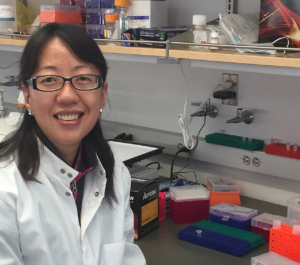Application Note on Holographic Imaging Cytometer HoloMonitor M4® Motility Applications
Digital holographic cytometry (DHC) allows for long term, label-free, non-phototoxic imaging of mammalian cells. When using DHC, individual cells can be monitored over time, and simultaneously population data is gained. This makes it possible to observe subpopulations that behave differently than the bulk of cells.
University of California San Francisco
Yuntian Zhang 1,2 and Robert L. Judson 1,2
1 Helen Diller Family Comprehensive Cancer Center, University of California San Francisco, San Francisco, California, 94143
2 Department of Dermatology, University of California San Francisco, San Francisco, California, 94115

Yuntian Zhang, Ph D Postdoctoral Scholar, Helen Diller Family Comprehensive Cancer Center, University of California San Francisco
ABSTRACT
Digital holographic cytometry (DHC) allows for long term, label-free, non-phototoxic imaging of mammalian cells. When using DHC, individual cells can be monitored over time, and simultaneously population data is gained. This makes it possible to observe subpopulations that behave differently than the bulk of cells. Standard methods for analyzing cell motility have limitations as they measure only population averages and deviate from standard routine culturing conditions. These deviations may induce artefacts in the results.
In this study the software modules for cell tracking, wound healing and population motility, were evaluated based on outcome and reproducibility, and results compared to the standard methods, Boyden transwell assays.


BACKGROUND
Cell motility assays are essential in cancer research and many other fields in cell biology. The widespread standard in vitro methods measures relative motilities of cell populations. Among them are the Boyden transwell migration and invasion assays, and the wound healing/scratch assays. These assays measure population averages only and require culturing conditions that differ from normal conditions. Serum starvation prior to the experiment is one example of a treatment that can interfere with the results. DHC, on the other hand, provides motility data for each individual cell, which can be essential when studying heterogeneous ex vivo cell populations, without scarifying the integrity of the cell culture.
Previously published results (Zhang and Judson 2018) evaluating HoloMonitor M4 cell tracking and wound healing assays regarding outcome and reproducibility. Results were analyzed using the Hstudio software and compared with the Boyden transwell assays.
Both HoloMonitor Track Cell module and the Wound Healing Assay were found to be well-correlated with established standards, yielded reproducible results, and at the same time offered distinct advantages.
Y.Zhang and R.L.Torres-Judson, UCLA
Cytometry Part A (2018)
HOLOGRAPHIC MICROSCOPY
The HoloMonitor Wound Healing Assay with automatic calculation of gap width, showed high reproducibility between different image fields on the same gap and significant differences between the cell lines using the mean of biological triplicates. The increasing deviations seen for the 1205Lu cells may be explained by the subpopulation of highly motile cells found in the cell tracking of individual cells presented. When the motility assays of Hstudio, single cell tracking and wound healing, were compared to the classical Boyden chamber assays, migration and invasion the relative population motility was well comparable between the different assays. The same results were achieved when reanalyzing the DMH data using the new proprietary software App Suite Kinetic Motility assay.
CONCLUSIONS
There are many benefits of using DHC compared to the standard methods, one being the possibility to capture rare events in sub-populations of cells. The added population-based results obtained from HoloMonitor App Suite Kinetic Motility Assay, also highly correlated to the other population-based results. This enables fast, easy and automatic analysis of population data. The achieved DHC images can later be used in Hstudio to track individual cells regarding movements as well as morphology. Moreover, since DHC is label free, the cells are left unharmed and can be used for further analysis using end-point assays after imaging, to gain even deeper knowledge.